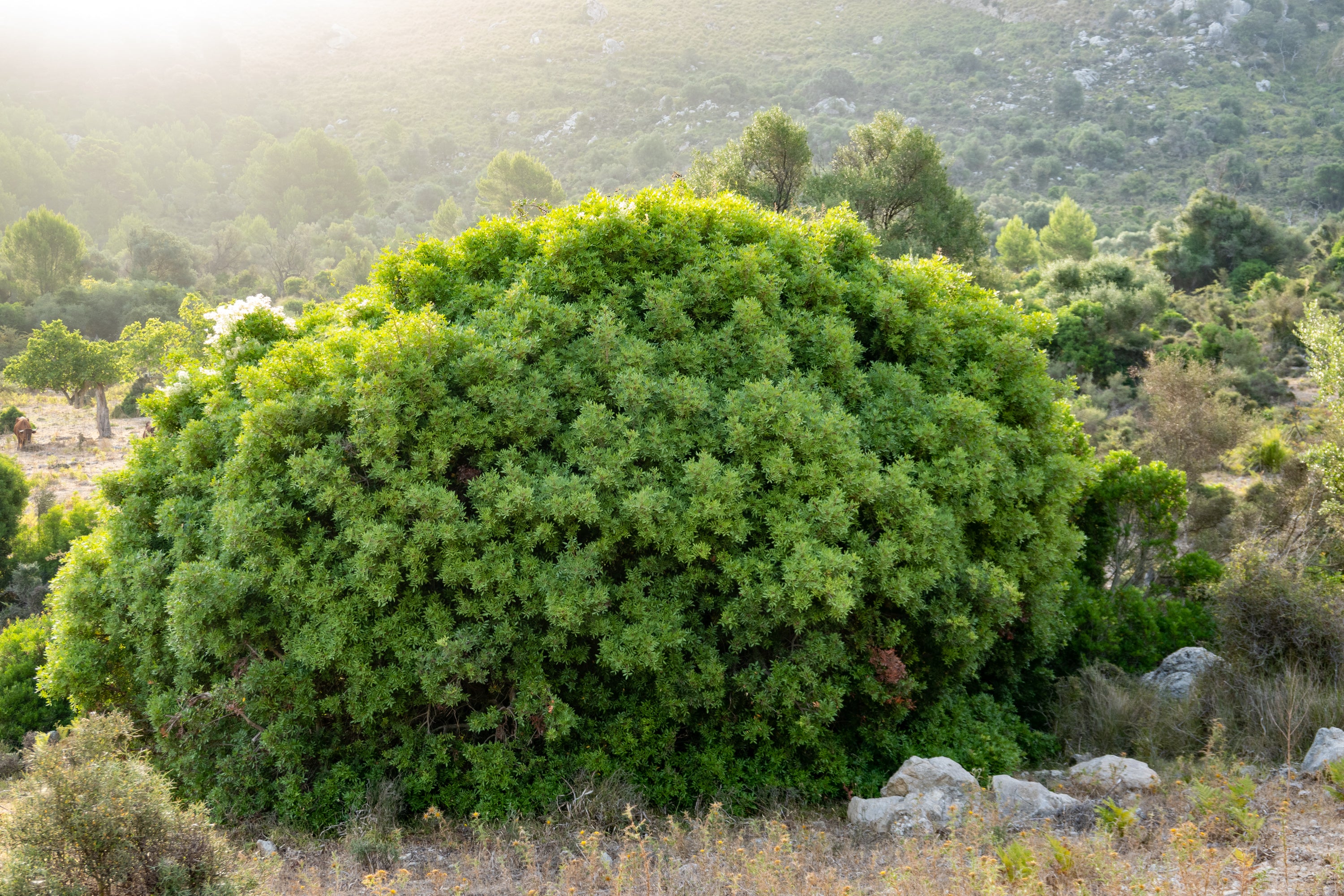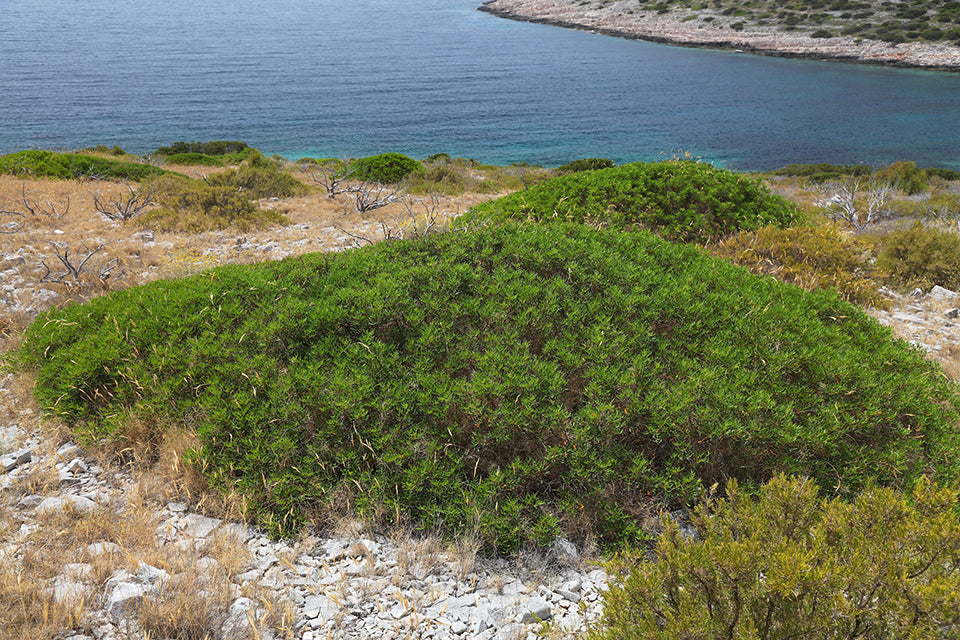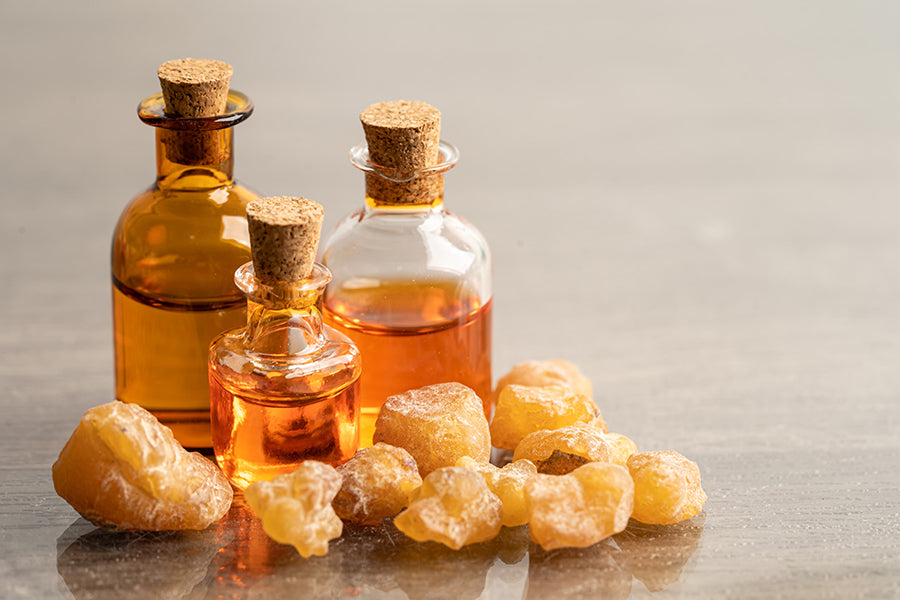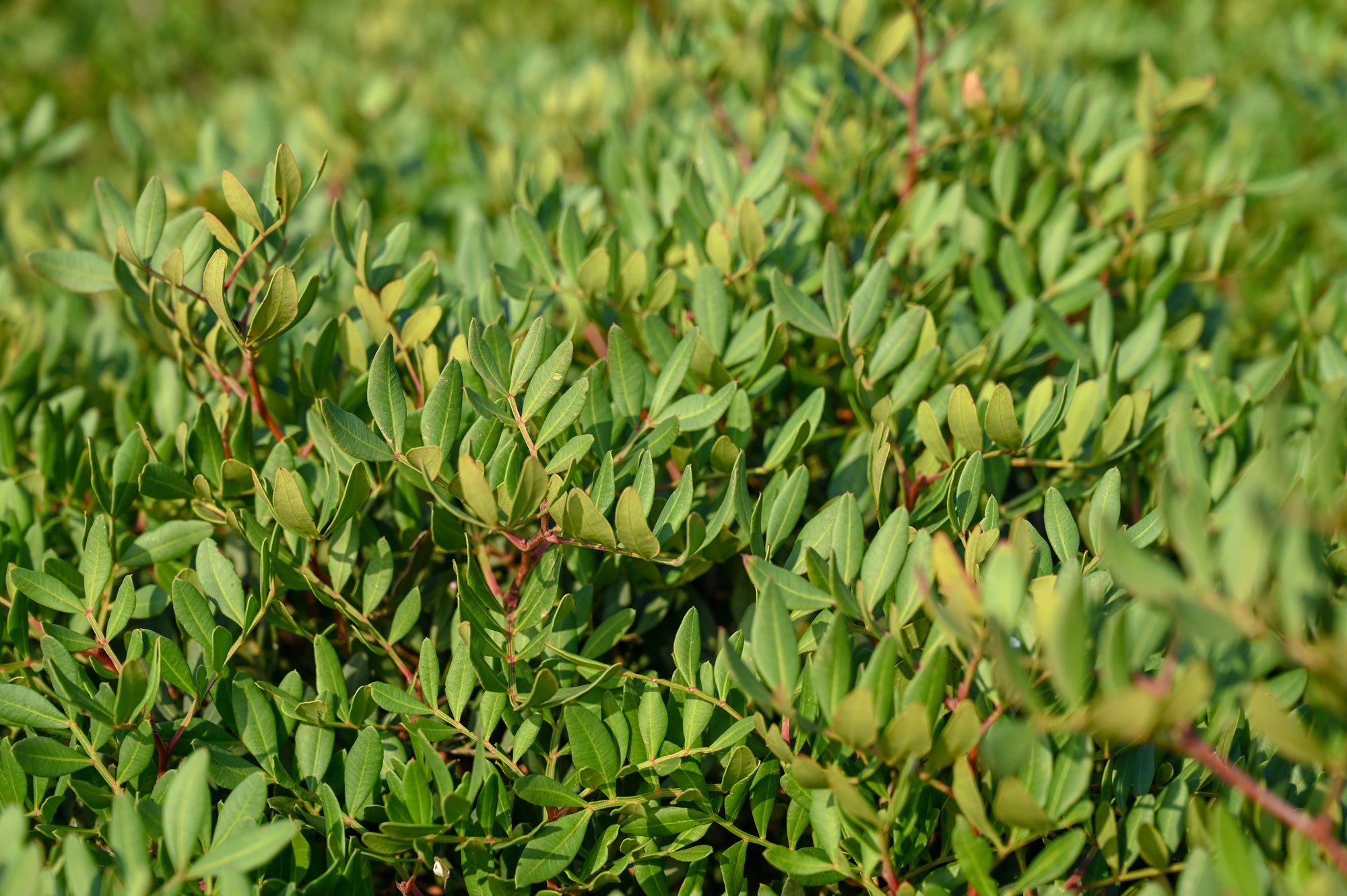
Mata (Pistacia lentiscus)
Mata (Pistacia lentiscus) is an evergreen plant native to the western Mediterranean. The plant has a long history in traditional medicine and has been used for centuries to treat a variety of ailments.
Its history dates back to ancient Greek times, where it was used as a remedy for gastrointestinal complaints and wound healing, among other things.
The use of mata as a medicinal plant has remained to this day. The plant is used for its anti-inflammatory and antioxidant properties to relieve pain and inflammation.
Besides its medicinal properties, mata also has a cultural significance. In Greece, it is considered a symbol of hospitality. In the Balearic Islands it is considered a symbol of resilience, endurance and adaptability.
In this article we will explore the history of mata from its ancient roots to its current importance as a medicinal plant.
A jewel among the plants of the Mediterranean Sea
Amidst the diverse plant wealth of the earth, there are some real treasures that have been used and appreciated by different cultures for thousands of years. One of these precious gifts of nature is mata, a medicinal herb whose medicinal properties were already known in ancient Greece and Rome.

The history of the Mata
The history of mata goes back far into the past. Already in ancient Greece it was appreciated for its medicinal properties by famous doctors such as Hippocrates and Dioscorides. It was used to treat gastrointestinal complaints, to promote digestion and as a diuretic. Also in ancient Rome people recognized the healing powers of mata and used it in medicine.
In Greek mythology there is even a legend connected with the Mata. According to the myth, the Mata was a gift from the gods and was born from the tears of the goddess Chios, who was transformed into a tree from grief over the death of her beloved. Such stories underline the mystical importance attributed to the Mata throughout time.
The mata is an integral part of local culture and traditions and is used in various aspects of daily life, such as cooking, folk medicine and craftsmanship.

Mata in medicine
In folk medicine, the mata is used mainly as a digestive remedy. The ingredients of the leaves and resins help with digestive problems such as stomach pain, flatulence and indigestion. Mata has a calming effect on the gastrointestinal tract and supports digestion.
It is also valued for its antimicrobial properties. The essential oils and resins it contains have antibacterial and antiviral effects that can be used to treat infections. Mata-based remedies are used in the treatment of sore throat, gingivitis and skin infections.
The mata has anti-inflammatory effects. These properties can help reduce inflammation in the body and relieve associated discomfort. Mata-based products can also be used to treat rheumatic complaints, arthritis and other inflammatory diseases.
Mata is used in some skin care products. Its astringent properties can help tighten the skin and shrink pores. Mata-based lotions, creams or oils are used to treat blemishes, soothe the skin and make it softer and smoother.













